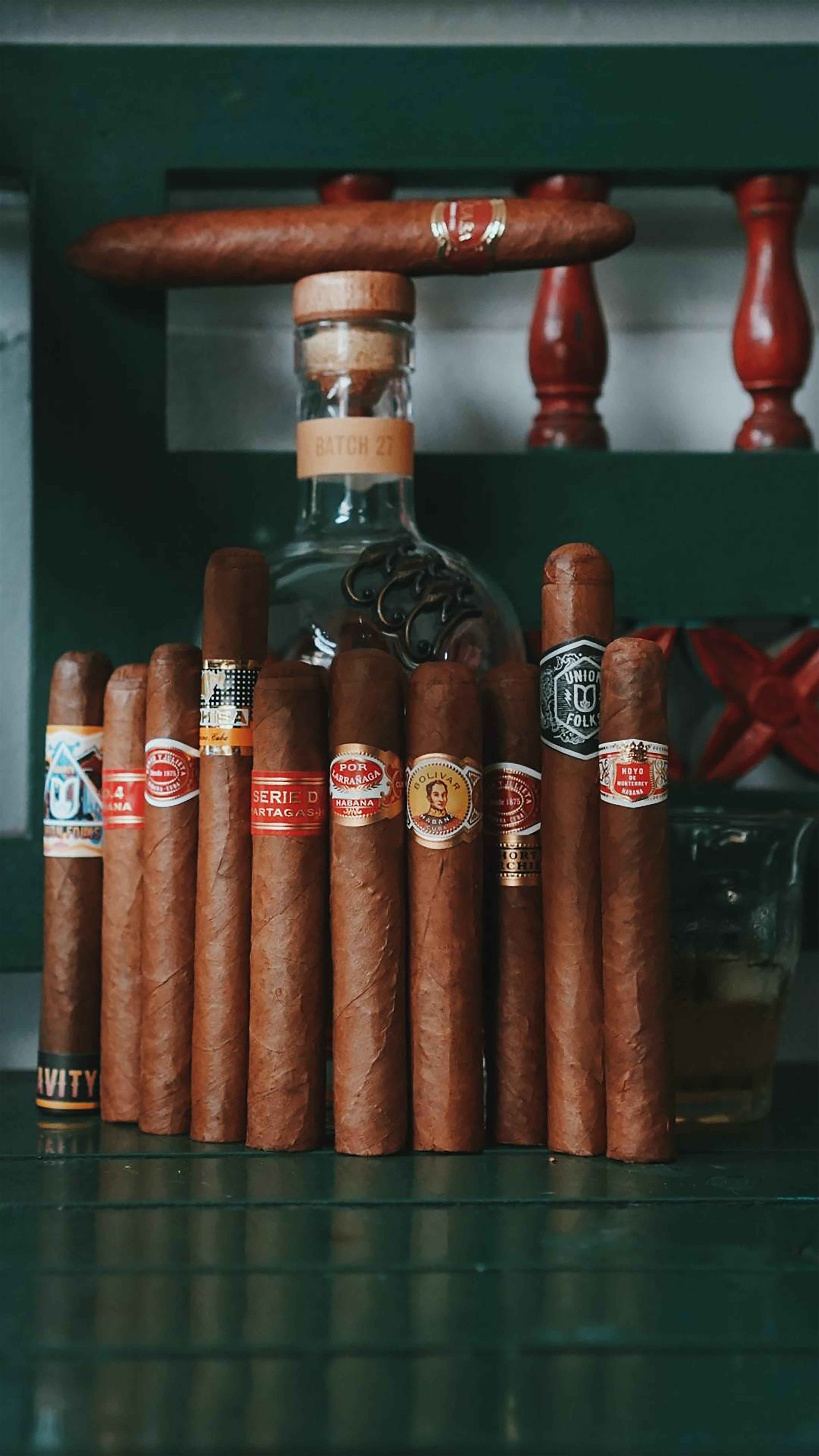In our recent post, we discussed how to match your whisky with the perfect cigar, plus the different shapes and sizes of cigar available. Here we’ll focus on how cigars are traditionally made. Cigars are produced in several countries around the world, but we will concentrate on the famous cigar-making island of Cuba in the Caribbean.
Cuba is widely regarded as the spiritual home of cigars and is known for producing some of the world’s finest brands – these include Romeo y Julieta, Montechristo and Cohiba. Cuba lies between the southern tip of Florida and the island of Jamaica. Its climate and fertile soil give ideal conditions for growing tobacco plants.
The island also has a rich heritage with tobacco. When Christopher Columbus discovered Cuba in 1492, he was greeted by natives and offered cohibas (the Spanish word for cigar) and tobacco plants as gifts.
The tobacco plant
Tobacco is a large flat leaved plant. The cigar industry grades these leaves with the plant split into three sections. The leaves at the base are called volado, the central leaves are seco and those at the top are ligero. Each leaf type has its own properties and characteristics and are used in different parts of the cigar.
The native tobacco plants on Cuba are directly descended from plants that were growing when Columbus arrived over 500 years ago. Cuban Black Tobacco (tabaco negro cubano) grew wild before being cultivated in the 16th century.
Tobacco is grown in defined regions, like the ‘denomination of origin’ system in wine – Champagne, Chianti, Rioja – and each region has differing soil structures and micro-climates.
They are the Vegas Finas de Primera and there are four: Vuelta Abajo on the far western tip of Cuba; Semi Vuelta also west but further inland; Partido is further east and the closest region to the Cuban capital of Havana; and Vuelta Arriba, which is split in two – one in central Cuba named Remedios, the oldest growing area on the island, and one on the eastern peninsula named Oriente.
The anatomy of a cigar
Every cigar is made up of three constituent parts – filler, binder, and wrapper. Each part uses leaves from different sections of the tobacco plant and perform different functions.
The filler is the main body of the cigar and is made using a combination of the three classification of leaf– volado, seco and ligero. This combination gives the cigar its flavour profile.
The volado leaves from the base of the plant are mild in flavour, the ligero leaves from the top have the most intense flavour while the seco leaves from the middle sit somewhere in between.
The ligero undergo significantly more photosynthesis and are younger and fresher than the lower leaves on the plant. Therefore, the ligero has more sweetness and darker colouration than the volado and seco when dried and fermented.
The three-filler leaf blend is secured with a binder leaf. This essentially holds them together. The binder is taken from the top of the plant but undergoes a different treatment to the filler ligero leaves. More on this later.
The wrapper leaf, which contributes the least flavour, is secured tightly for the best presentation. These are grown in a different way and produce the most expensive tobacco. They grow under muslin covers – this filters sunlight and traps heat, allowing the leaves to grow larger and finer. By contrast, the leaves for the filler and binder are grown outside and under direct sunlight.
Preparing the leaves
Once fully grown, tobacco leaves are harvested and graded depending on their intended role. Leaves are harvested in stages, with base leaves (volado) being taken first and others taken over the following 30 days. The youngest top leaves of the plant (ligero) are taken last.
Leaves are taken to the casas de tabaco, or curing barn, and hung in pairs on racks. Moisture evaporates and the leaves turn brown. The wrapper leaves take around 25 days, while the binder and filler take double that.
The leaves are then placed in piles and undergo natural fermentation, much like your garden compost heap. The ligero filler leaves and wrapper leaves ferment in around 30 days with the seco and volado filler leaves and binding leaves taking 25 days. Then the leaves are sorted by size, texture, and colour before the filler and binder leaves undergo a second fermentation. The times vary between 45 and 90 days.
The wrapper leaves do not undergo a secondary fermentation but are packed in bales after sorting. These bales are called tercios and made from palm bark. Wrapper leaves are then aged for a minimum of six months.
After secondary fermentation, the filler and binder leaves are gathered in to bundles and wrapped in hessian for ageing. These bales are called pacas. The volado are aged for a minimum of nine months, seco for 12-18 months and ligero for two years.
Prior to making a cigar the leaves are moistened, have classification confirmed and stripped of the stem. The leaves are sent to the ligador, a master blender, who constructs the complex blend for the brand of cigar that is being produced. The recipe and ratio of each leaf type that is used is a closely guarded secret. The blend is passed to the torcedores (or torcedoras for women), the highly skilled craftspeople who hand roll the cigars.
How cigars are made by hand
When making a classic tripa larga (long filler) cigar, the binder leaves are laid out and the filler leaves are folded and aligned on top to allow the passage of smoke to travel along the length of the finished cigar. The flavoursome ligero leaves are placed in the centre and wrapped in seco and then volado leaves.
A cigar is constructed to make the intensity of flavour increase as it is smoked. Once assembled, these filler leaves are tightly rolled using the binder leaf to ensure that they are compressed evenly along the full length. After 30 minutes in a wooden mould, the tocedor applies the delicate wrapper leaf by stretching and straightening it to ensure perfect tension and appearance.
Finally, a small piece of leaf is used to cap the head of the cigar (the end that goes in your mouth. This is cut off before smoking. The other end, which you light, is guillotined to size. A torcedor can produce 100-150 cigars a day. The completed cigars are sent to be labelled, sorted, and boxed.
The production of tripa corta (short filler) cigars is similar but they use the trimmings of leaves left from tripa larga production, rather than the whole leaves. The bunch of trimmings is rolled tightly using a flexible mat before the binder and wrapper leaves are applied in the regular way. These cigars will retail for less.
In machine-made cigars, the three leaves are in much smaller pieces and are specifically blended. They are then tightly packed together and bound with the binder and wrapper leaf by the machine. These are the cheapest style of cigar.




